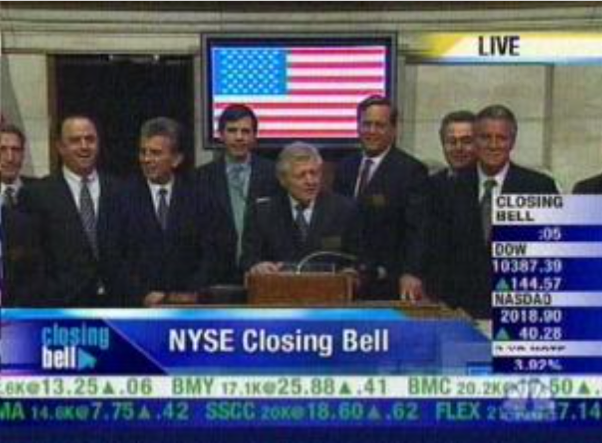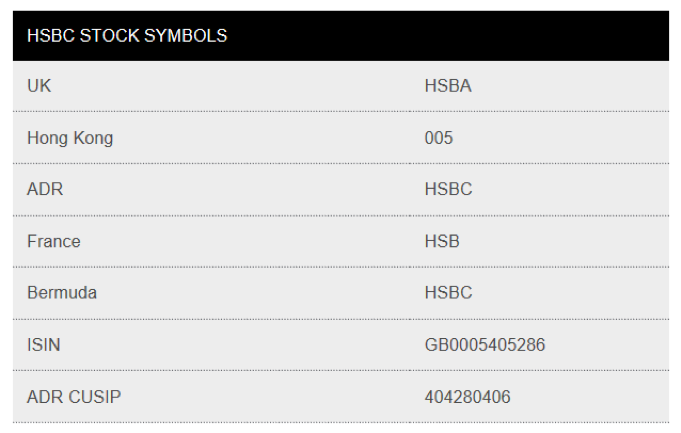What is a stock code?

A stock code definitionis an item of stock on a stock quotation scheme. Each unique code is made up of either numbers and letters or both. For example, Alphabet Inc, the owners of Google, are listed as GOOG and Apple Inc is listed as AAPL on Nasdaq.
Key takeaways
Stock codes are unique identifiers for publicly traded companies, with US/European exchanges using 3-4 letters (GOOG for Google, AAPL for Apple) while Asian markets use numeric codes (HSBC trades as 0005 in Hong Kong).
NASDAQ's 5th letter provides additional details like voting rights (J) or bankruptcy (Q), mutual fund symbols end with X, and companies can select creative codes for branding like BUD for Anheuser-Busch or HOG for Harley-Davidson.
Ticker tapes display real-time stock data with 15+ minute delays, showing code, trading volume, share price, price change direction and amount, with green indicating rising prices, red for falling, and white/blue for unchanged prices.
Companies can be cross-listed on multiple exchanges simultaneously, and codes can change when firms merge, restructure, or switch exchanges, as BlackBerry changed from BBRY to BB when moving from NASDAQ to NYSE in 2017.
The ticker tape system originated in 1870 using telegraph and paper strips, transitioned to electronic format in 1996, and UK markets additionally use TIDM codes and global ISIN format comprising 12 alphanumeric characters for identification.
Where have you heard about stock codes?
You see stock codes on the rolling ticker tapes that run across the bottom of the screen during financial news programmes. The code is used to show which company has traded shares.
What you need to know about stock codes...
Stock codes are also known as ticker symbols or stock symbols.
Each of the world's stock exchanges has a naming convention for their codes. The US and European stock exchanges normally use stock codes of 3-4 letters that often closely represent the company name, like EZJ for Easyjet. In Asia the stock codes are normally a series of digits, for example HSBC trades under 0005 on the Hong Kong Stock Exchange. Asian markets often opt for numbers to avoid any problems with non-Latin scripts.
Some stock codes contain useful information about the security listed. NASDAQ stocks, for example, usually have 4 letters but sometimes they also have a 5th letter that gives you more detail on the listing i.e. J means the shares have voting rights and Q means the company have previously been declared bankrupt.
If you want to look up a stock but only know the company name, you can search online in a database. All you have to do is enter the company name and select an exchange to search for it on.
You should be aware that stock can be traded on more than one exchange and in more than one country at the same time. This is known as cross listing. BP, for instance, are listed on both the NYSE and the London Stock Exchange (LSE).
Every company that publicly lists shares on a stock exchange has a unique stock symbol to identify it within the ticker tape so that analysts and traders can track those shares. Other financial products have stock market ticker symbols for the same purpose, including mutual funds and options. The ticker symbols for mutual funds end with an X so traders can tell them apart from company stocks.
As companies change structure or focus, for example as a result of a takeover or merger, their names can change and their stock code can change to reflect this. Riot Blockchain, Inc. changed its stock symbol on NASDAQ from BIOP to RIOT in October 2017 to reflect a name change as part of its greater focus on blockchain technologies.
Companies sometimes also change their stock code when they move between exchanges. Again in October 2017, Canadian tech company BlackBerry Limited changed its stock symbol from BBRY to BB when it moved from the NASDAQ Global Select Market to the New York Stock Exchange (NYSE).
Some companies attach kudos to their stock symbols in much the same way as people seek out personalised number plates for their cars. Single-letter symbols in particular are desirable and long-established companies often nabbed these early on, 1956 in the case of Ford (F).
Stock symbols can offer a brand marketing opportunity to creative investor relations teams. US brewer Anheuser-Busch for example opted for BUD to remind thirsty investors of their best known beer. Classic motorbike manufacturer Harley-Davidson has a loyal fan base of people who are members of the Harley Owners Group so it is only fitting that the company chose the stock symbol HOG.
As more and more companies have come to market however, on larger exchanges it is not always easy for a company to choose a stock code that reflects its name as many permutations have already been taken.
Understanding the ticker tape
The name ticker tape dates back to around 1870 when stock prices were communicated by telegraph using physical paper strips. To transmit as much information as possible in a small space, a shorthand code was used for each company along with the volume traded and stock price. Amazingly this system remained in use until the 1960s although the industry didn’t get round to launching a real-time electronic stock market ticker until 1996.
The same codes are used today and appear on business TV reports, on financial websites and in the UK the sideways scrolling orange ticker tapescreen is a familiar sight to workers exiting the Underground at Canary Wharf.
Below is a screenshot of financial coverage on the CNBC channel with ticker tape information running along the bottom of the screen.

Source: https://en.wikipedia.org/wiki/CNBC_Ticker.
Let’s decipher the stock market ticker code for Bristol-Myers Squibb listed on the New York Stock Exchange, shown in green along the bottom of the screen in the above photo:
- The first three letters are the company stock ticker code BMY
- Then comes the volume of shares for the quoted trade (17.1k). K stands for a thousand, but you will also see M for a million and B for a billion. If no multiple is shown it means the volume is in hundreds
- Next is the price per share at which it traded (25.88). We can tell from this that the photo is quite old as BMY has not traded below $26 since 2011
- The arrow after the price indicates whether the stock price is higher or lower than the closing price the previous day
- The last number (0.41) shows the difference to the closing price the previous day
- Finally, the colour intuitively reflects the change with green indicating a rising price compared to the previous day and red a falling price. If the ticker is white or blue, it means the price is the same as the closing price on the previous day
The ticker shows share prices in real time with a small delay. Given the huge number of stocks traded every day, the ticker tends to focus on shares that are (i) widely held, (ii) that experience the biggest price changes, (ii) that have the highest trading volumes, or (iv) if the company is subject to significant media scrutiny.
A specific ticker symbol might not reappear for some time given the variety of trading happening at any given time. Most tickers only quote information from one stock exchange although it is not unusual to see quotes from two exchanges on the same ticker.
Ticker symbols in the United Kingdom
Real-time electronic tickers were introduced in 1996. In the UK, stock codes before that date were called EPICs, the acronym for the Exchange Price Information Computer provided by the London Stock Exchange. After this date, they were renamed Tradable Instrument Display Mnemonic (TIDM). UK shares can also be found by searching for their Stock Exchange Daily Official List (SEDOL) number or International Securities Identification Number (ISIN).
The table below shows the stock symbols for HSBC bank, which includes the EPIC/TIDM for the London Stock Exchange (HSBCA) and the ISIN as well as the numeric code for its listing on the Hang Seng in Hong Kong. Note that the ISIN starts with GB for the UK and is followed by the numeric Hong Kong exchange stock code.

Source: https://www.hsbc.com/investor-relations/share-and-dividend-information.
While ISINs are used for shares in the UK, this is actually a global ISO code. ISINs are not only issued for shares and can be applied to warrants and bonds and are always 12 alpha-numerical characters, which provides certainty when trading and for settlement of transactions.
The 12 character ISIN can be split into three sections:
- First is the two-letter country code as shown in the HSBC example above, which is the ISO country code
- Next is a unique nine-character national security identifier
- Finally, there is a single check digit
Note that the ISIN country code is not necessarily where the company is registered. It relates to where the security has been issued. The country code XS is used for Europe-wide securities cleared through Euroclear or Clearstream.
There is a short delay on real-time information coming through and this applies in the UK, with the London Stock Exchange Prices Help page provides the following reason: “To comply with licensing agreements, the information that is available free of charge is delayed by at least 15 minutes (some of the international indices data may be delayed by more than 20 minutes to comply with their licensing agreements).”